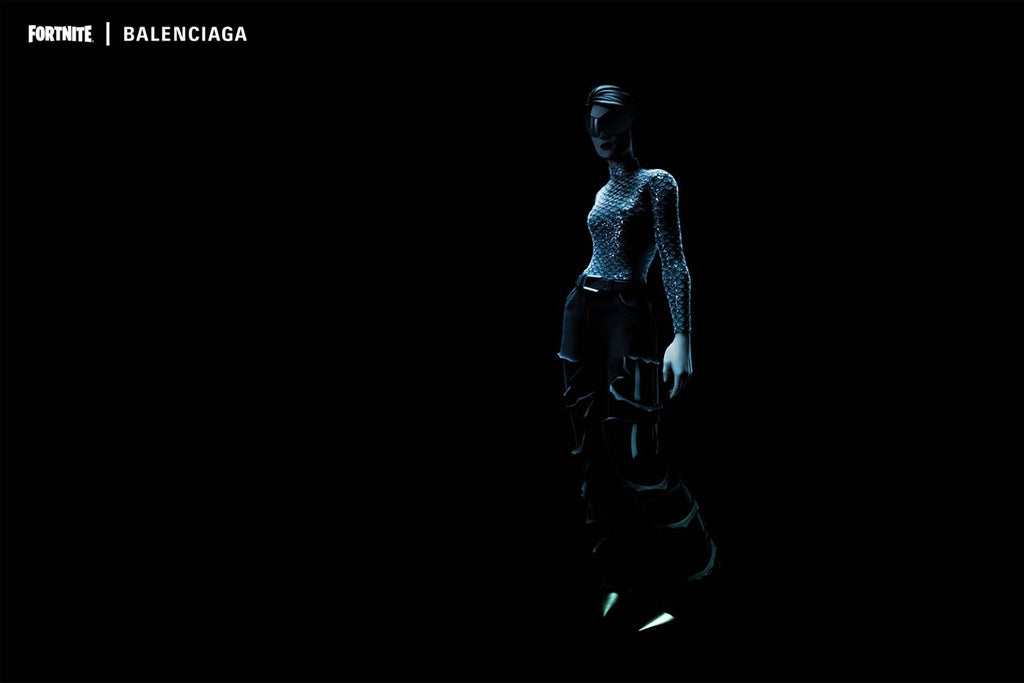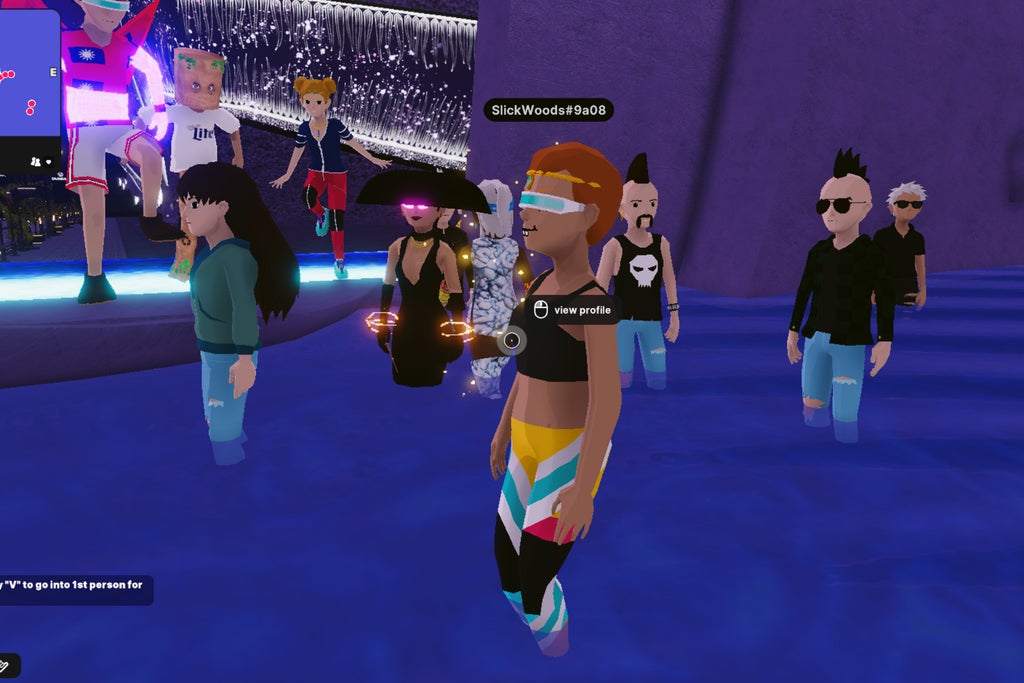As a kid, Kelsey Impicciche hoped for a closet just like Cher Horowitz’s in Clueless, fantasizing about flipping through each outfit option on a screen before deciding on a look: “That was my dream.”
Decades later, she gets to do it — sort of. Impicciche is a professional gamer and streamer with over 120,000 followers on Twitch and over 700,000 on YouTube. In particular, she is known for her videos on the popular life simulation game The Sims. Through her content, Impicciche walks her audience through her experiences in The Sims 4, the 2014 version of the popular game, which range from dressing her avatars in the game’s wide selection of trendy digital clothes to following other gamers’ challenges.
But while for many, fashion is a minor part of the gaming experience, for Impicciche, it’s an expression of personal style. “I think what’s exciting and unique about this… [is] the amount of you that you bring to the game,” she says. And, like Cher’s revolving wardrobe, digital fashion gives her seamlessly endless options to consider.
Virtual avatars have existed almost as long as gaming itself. But over time The Sims’ early grainy options of basics became designer-worthy clothes good enough to wear in real life. Thanks to the rapid development of digital wearables and the expansion of downloadable fashion assets for virtual avatars (more on both below) on games like Animal Crossing and Fortnite, avatars can be identical to our human selves, whether in a video game, like Sims, or in metaverse platforms, like Decentraland and Second Life.
According to a recent study, titled “The Screenwear Paper,” by Virtue — the in-house insights agency at Vice Media Group (Refinery29’s parent company) — super-personalized avatars will become commonplace in everyone’s lives over the next three years. This will create a demand for digital fashion, a phenomenon that is already manifesting: According to the study, 95% of those surveyed say they are interested in buying digital fashion; of those surveyed, 82% revealed that they had already bought some type of digital fashion.

In turn, brands like Gucci and Balenciaga have jumped on the opportunity to establish their presence in the digital world, by releasing digital wearables — clothes you can wear online — non-fungible tokens (NFTs) — garments owned in online spaces that can be sold and traded — and skins — a graphic download that changes the appearance of a virtual character. Back in 2020, Balenciaga even presented its Fall 2021 collection via a video game, titled “Afterworld: The Age Of Tomorrow.” (Last year, the brand also partnered with gaming platform Fortnite to release a collection of digital wearables.) Meanwhile, Gucci has teamed up with games and metaverse platforms ranging from The Sims to Genies and Roblox to create clothes for virtual avatars.
For Impicciche, the rapidly-evolving world of digital fashion is exciting, mainly because she’s always seen the virtual world as a limitless journey of self-expression. “Since I was a kid, I really liked building [my avatar] in The Sims,” she says. “Sometimes I’d create them and never even play with them.” According to the Virtue study, 70% of people agree, selecting the ability to build an identity in the metaverse as the main reason for purchasing digital fashion.
For some, it’s also a chance to experiment with their style without committing to the change IRL. “I’ve done a version of myself where I took myself looking like me and dyed her hair black, and I made all her outfits entirely something I would never wear. And it was fun to see this alternate version of myself play out,” says Impicciche.
While Impicciche loves the creative freedom that digital avatars provide, others may find it overwhelming, which has led to a rise in metaverse stylists. A pioneering figure in this space is Gemma Shepard, who signed on with metaverse platform Roblox this year to help users build their digital fashion personas. “The metaverse is the place where anyone can express themselves through fashion so for brands it’s untapped territory for connecting with customers and also road-testing new designs because if it’s popular in the metaverse, it’ll likely fly in store,” Sheppard told Grazia earlier this year. “I’m super intrigued by the idea of uniting real and virtual life.”

And already the IRL and virtual fashion experiences are merging seamlessly. Last week, Decentraland celebrated its first Metaverse Fashion Week, alongside designers like Giuseppe Zanotti, Elie Saab, and Tommy Hilfiger, as well as digital-first brands like Auroboros. And just like a real fashion week, the street style mattered just as much as the runway shows: Virtual avatars were dressed in Decentraland’s array of accessories and clothing, modeling their real-life counterparts. While the technology may not be able to mimic a street style experience (complete with photographers and honking cars waiting for influencers to move out of the way) yet, it’s easy to see how walking around the platform’s Fashion District — a designated area within the metaverse built for the event — could incite a desire to dress the part.
“It’s super fascinating to see a fully digital experience being more normalized,” says Impicciche. “It’ll become more and more commonplace.” Maybe then, there will be no need to imagine a Cher-like closet — it’ll be real.

Like what you see? How about some more R29 goodness, right here?
Why Are Designers Holding Shows In The Metaverse?
How Gamers Are Earning $$$ Selling Virtual Fashion
Why Gamers Are The Cool Kids In Fashion Right Now
from Refinery29 https://ift.tt/u40CBYz
via IFTTT
